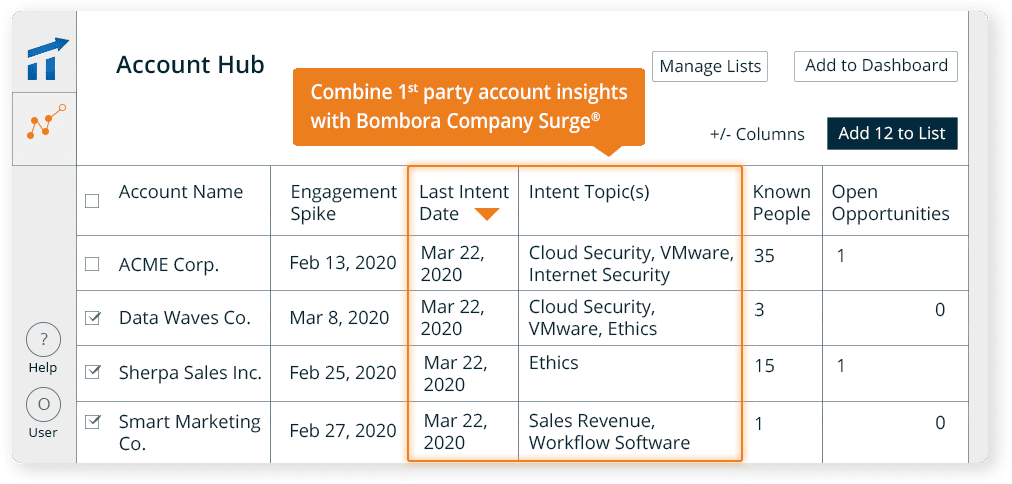Marketers everywhere struggle to find new buyers. It’s baked into the job description. And with new mandates focused on building pipeline and driving revenue—coupled with budget reductions—efficiency is the name of the game.
Shortening sales cycles and boasting lower acquisition costs are things that every marketer wants to nail, and intent is the way to find in-market buyers before they enter the funnel. In other words: you’ll have a head start on landing deals before your prospects even begin to consider your competition.

The Terminus platform shows sales and marketing teams exactly who their next best opportunities are– and how likely they are to become a new customer. Combining our first- and third-party intent data allows teams to see exactly where they should be focusing their efforts.
Let’s dive a little deeper into what you need to know before operationalizing intent at your organization and ensure the health of your business.
For those in the back… what is intent data?
Intent data refers to the behavioral or dynamic signals that indicate increased interest from your target accounts (or net new accounts) and is often broken down into first-party and third-party data
First-party intent data, or engagement data, is the information captured on or through your own website and channels and is standard fare for most marketers.
Third-party intent data reflects the behavioral signals made by your targets on sites other than your own. Because third-party data—even while going through huge fundamental changes with the demise of the cookie—inherently relies upon a provider, it’s crucial to understand where your intent data comes from and how it was acquired. We wrote an entire blog about the ways intent data can be collected and distributed. Click here to read more.
Once I have it, how do I use intent data power the revenue flywheel?
Intent data has a use at every stage of your customer lifecycle. By employing it effectively, you can generate some real revenue momentum.

Here’s how intent data can be used for different plays across the full lifecycle:
Brand Awareness: find net-new prospects who are searching for market or industry terms indicating that they are early in the research phase
Build Pipeline: deliver messaging to prospects showing intent around topics directly related to your brand or who have engaged with your website
Pipeline Acceleration: users showing intent related to competitors can be placed in nurtures to nudge them toward a decision
Retention: keep an eye out for customers who start making buying signals–they may be looking for a new provider and it’s incumbent upon you to change the conversation
Expansion: higher website engagement or searches for products similar to ones you offer might indicate an opportunity to expand an account.
Working with a company like Bombora allows you to paint a richer, more holistic, and more reliable picture of intent than companies that track and deliver keywords individually. With access to time stamping, URLs, IPs, scroll velocity, and dwell time, Bombora can also determine the level of engagement with each content piece—not just a site visit.
Terminus x Bombora
Our partnership with Bombora allows you leverage intent data to:
- Pinpoint which businesses are actively researching your products and services.
- Uncover signals about these businesses and what they want to hear from you.
- Identify and target accounts who are already in-market with built-in, compliant intent data; and execute multi-channel campaigns immediately.

Using intent to hone in on your target accounts that are in-market is great, but what if you could discover in-market accounts that you didn’t even know about?
Bombora is able to scan billions — with a “b” — of monthly content consumptions and consider lots of keywords within content pieces, while also considering its context, relevancy, and density.
Overall, it’s important to think of intent data as a tool to help you both prioritize accounts, and contextualize accounts. Your marketing message needs to be closely aligned with surged topics, recently viewed web content, or competitive takedown messaging.
What’s next?
Understanding what to do when accounts are showing intent to buy will help prioritize them through the entire buying journey with native, multi-channel ABM campaigns. We can help you make it work. Join our team for a demo to get started on targeting your next best opportunity.